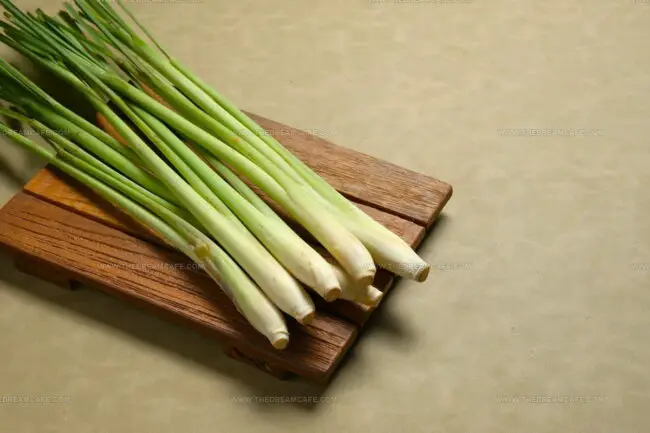10 Tantalizing Alternatives When You’re Fresh Out of Lemongrass
Lemongrass imparts a citrusy, aromatic brightness essential to many Southeast Asian dishes and beverages.
If fresh lemongrass isn’t available, options like lemon zest, lime zest, or lemon verbena can approximate its fresh, zesty flavor.
Some substitutes work better in cooked dishes, while others shine in teas and marinades.
These ten best lemongrass substitutes offer adaptable solutions for every recipe type.
Understanding how to balance acidity and aroma ensures your dishes stay true to their roots.
These alternatives keep your pantry flexible without sacrificing the bright, herbal notes lemongrass provides.
Discover practical tips for incorporating lemongrass replacements into your culinary repertoire.
What Is Lemongrass?
Lemongrass is a tall, fragrant grass commonly used in cooking, herbal remedies, and even natural home products. It has a fresh, citrusy aroma with subtle herbal and floral undertones, which makes it popular for adding brightness to both savory and sweet dishes.
The plant grows in stalks, with a tough outer layer and a softer, aromatic inner core that holds most of the flavor.
In the kitchen, lemongrass is often bruised, chopped, or sliced to release its essential oils, then simmered or steeped to infuse flavor into soups, curries, marinades, teas, and broths. While its fresh form is widely appreciated for its vibrant taste, it can also be found dried, powdered, or as a paste for convenience.
What Makes Lemongrass So Distinctive in Southeast Asian Cuisine?
Lemongrass is a cornerstone of Southeast Asian cooking because of its unique aromatic qualities and versatile flavor profile:
These characteristics make lemongrass indispensable in creating the vibrant, layered flavors that define Southeast Asian cooking.
What Are Lemongrass Alternatives?
Lemongrass offers a fresh, citrusy fragrance. Without it, you can still capture a similar brightness. It’s all about keeping the dish light and flavorful.
Lemon Zest
Lemon zest makes an excellent substitution for lemongrass when you need a citrusy flavor in your cooking, and most kitchens already have lemons on hand.
Using a zester to remove only the yellow rind while avoiding the bitter white pith beneath creates a sweet, fresh burst of flavor in your dishes.
Though lemon zest lacks the distinctive earthy notes that make lemongrass special, it still delivers a bright citrus punch that works wonderfully in most recipes requiring lemongrass.
For best results, substitute lemon zest in a 1:1 ratio with the lemongrass called for in your recipe.
The convenience of this swap means you can still enjoy your favorite Thai or Vietnamese dishes even when specialty ingredients aren't available.
Lime Zest
Substituting lime zest for lemon zest adds a powerful citrusy kick to your dishes, though you'll need less of it due to its stronger flavor profile.
When zesting limes, make sure to scrape only the green outer layer and avoid the bitter white pith underneath.
The intense nature of lime zest can easily dominate the taste of your food if used in the same quantities as lemon zest.
For best results, start with half the amount called for in your recipe - about ½ tablespoon of lime zest can effectively replace 1 tablespoon of lemongrass.
This simple swap works wonderfully in both sweet and savory recipes where you want that distinctive citrus flavor without keeping multiple ingredients on hand.
Lemon Juice
Lemon juice is a handy substitute for lemongrass, adding that essential citrus zing to your curry without requiring a special trip to the store.
The sharp, acidic nature of lemons means you'll need much less than the recipe calls for - generally half the amount works well as a starting point.
While lemon juice lacks the distinctive earthy, warm undertones that make lemongrass special, it still delivers a refreshing citrus flavor that can brighten your dish beautifully.
For best results, add this substitute gradually and taste as you go along to avoid overwhelming your curry with too much tartness.
The beauty of this replacement lies in its simplicity - most kitchens already have lemons on hand when that lemongrass craving strikes.
Lemongrass Paste (Kreung)
Lemongrass paste is an excellent substitute when fresh lemongrass stalks aren't available in your local stores.
Most Asian grocery markets stock this convenient alternative, making authentic Southeast Asian cooking possible regardless of your location.
The paste packs intense flavor in a small amount, so remember that just one tablespoon replaces an entire stalk of fresh lemongrass in recipes.
This concentrated form means your jar will last through many delicious curries, soups, and stir-fries without losing its aromatic citrusy essence.
For best results, add the paste early in cooking to allow its flavors to fully develop and blend with other ingredients.
Dried Lemongrass
Dried lemongrass stands out as a potent ingredient that adds incredible flavor to both teas and various dishes with minimal effort.
Proper substitution requires careful measurement since its concentrated nature packs more punch than fresh stalks - just one tablespoon of dried lemongrass equals a whole fresh stalk in recipes.
The intense citrusy aroma remains intact when stored properly in airtight containers away from direct sunlight.
For best results, adding dried lemongrass early in the cooking process allows its essential oils to fully infuse the dish, creating depth and complexity that makes everyday meals special.
Kaffir Lime Leaves
Kaffir lime leaves stand out as the most flavorful substitute for lemongrass, sharing a similar citrus-to-spice profile that works beautifully in soups, stews, and curries.
These robust tropical leaves balance bitter, sweet, and citrusy notes, making them perfect for authentic Southeast Asian dishes.
The key difference lies in their intensity - Kaffir lime leaves pack much more punch than their milder cousin, so using half the amount ensures your dish won't become overpowering.
Many people prefer this substitute because both ingredients share that distinctive aromatic quality that regular lime or lemon simply can't match.
For best results, add these fragrant leaves early in the cooking process, allowing their complex flavor to infuse completely through your dish.
Lemon Balm
Lemon balm, a perfect stand-in for lemongrass, thrives easily in temperate herb gardens without needing tropical heat.
Many gardeners consider it similar to lemongrass but with a gentler personality, offering the same delightful mix of citrus, sweet, and earthy flavors in a more subtle way.
For best results when substituting in recipes, start by using four lemon balm leaves for each lemongrass stalk called for.
The subtle nature of lemon balm means you can adjust to taste by adding more leaves if the citrus notes aren't quite strong enough.
This versatile herb works wonderfully in teas, soups, and any dish where you want a hint of lemon without overpowering other ingredients.
Lemon Verbena
Lemon verbena stands out as the most intense lemon-flavored herb, surpassing even lemongrass with its powerful citrus punch.
The bold, robust character of this remarkable herb brings a subtle sweetness to cooked dishes without the earthy undertones that lemongrass typically provides.
For best results in your recipes, just two lemon verbena leaves can effectively replace an entire lemongrass stalk, giving you incredible flavor with minimal ingredients.
This potent herb requires a careful hand since too much can easily dominate other flavors in your cooking.
A smart approach involves adding small amounts initially, then adjusting to taste until you achieve the perfect lemon balance in your favorite dishes.
Arugula & Lemon Zest
Lemongrass brings unique acidic and earthy flavors that can be wonderfully substituted with a combination of peppery arugula leaves and bright lemon zest in many dishes.
These alternative ingredients blend together to create that distinctive lemongrass character without requiring a special trip to find the real thing.
For best results, add this flavor combo to soups, stews, and curries where the earthy notes and citrus hints can fully develop during cooking.
Most home cooks already have these common ingredients in their kitchen, making this an easy swap when lemongrass isn't available.
The arugula contributes that essential peppery complexity while the lemon zest provides the perfect citrus balance that makes people wonder if you actually used lemongrass after all.
Fresh Ginger & Coriander
Lemongrass substitutions don't require actual lemons, as the perfect alternative combines fresh ginger and coriander to replicate those distinctive earthy notes.
Ginger provides that characteristic bite while coriander contributes a subtle lemon-like acidity with spicy undertones.
Many cooks appreciate this combination because the ingredients are commonly found in most kitchens already.
The flavor profile works wonderfully in soups, stir-fries, and curry dishes where lemongrass would typically shine.
This reliable substitution saves trips to specialty markets when your recipe calls for this fragrant Asian ingredient.
How to Choose the Best Lemongrass Substitute
When picking a good stand-in for lemongrass, think about the main role it plays in your recipe - whether it’s bringing bright aroma, fresh citrusy notes, or a subtle herbal lift.
The best choice will depend on how you’re using it. In a soup or curry, you might want something that can infuse deeply during cooking, while in a salad, stir-fry, or drink, a lighter and more delicate option can work better. Pay attention to the balance of flavors so the swap complements rather than overpowers the dish.
Adjust the amount as needed! Stronger substitutes may require less, and milder ones a little more. If your recipe relies on texture, choose an ingredient that behaves similarly when simmered, blended, or steeped.
And of course, consider what’s already in your kitchen and any dietary preferences, so your alternative works just as seamlessly as the original.

